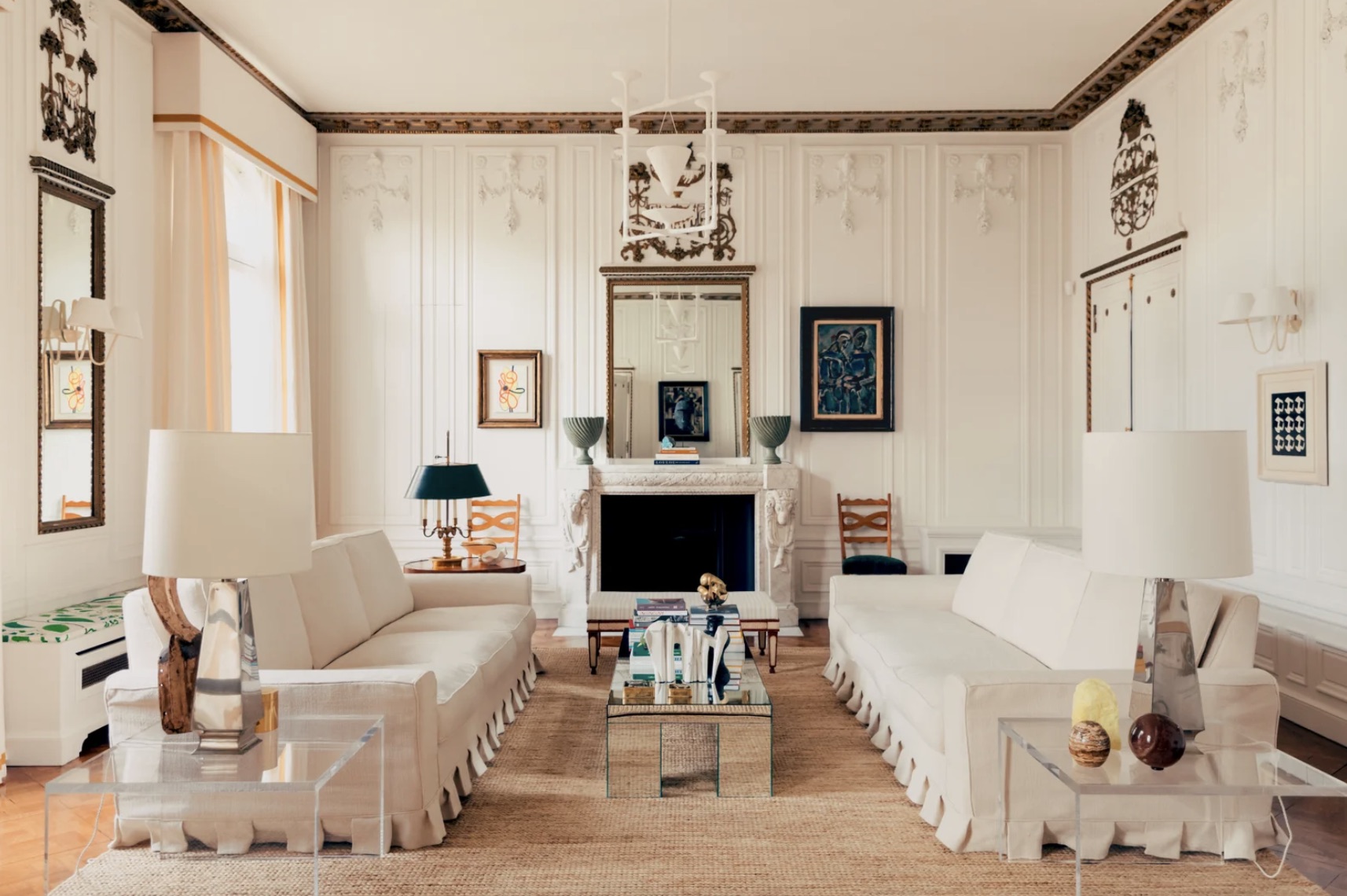Home should be a place that restores, rejuvenates and replenishes – but so often it is not. Now more than ever we all need homes that support our wellbeing – so we can seize each day as it comes. Now is the time to find out what a happy home starts with; Find out how to lift your home – and you with it. After all, the spaces we live in make us who we are. Here are the thoughtful intuitive design links that can be the quickest route to a soothed mind and boosted happiness in these unpredictable times. Read more, ‘Improve Your Mood With These Top 50 Decorating Tips.’
For many designers, the link between living spaces and well-being is intuitive, according to a recent article – ‘Can You Design Happiness’ in Business of Home. “A thoughtfully designed, personalised space sets you at ease, whereas a poorly planned one can bring on stress or the blues. But what that actually looks like can vary widely: some people feel most at home among rich hues, ample texture and low lighting; others prefer clean lines and sun-splashed minimalism. And while experts have reached certain points of consensus—like greenery can boost mood—other topics, like how much symmetry matters in design, aren’t so clear-cut. The good news is that design’s connection to mental health is garnering growing interest and resources, which means we’re likely to see plenty of new insights in the future”. Read more, ’10 Interior Tips to Happy Up Your Home.’
In the meantime, here’s a look at how beautiful spaces affect our brains, how art and nature can act as feel-good tools, and how colour and light might influence our emotions according to Business of Home research. Read more, ‘How To Decorate For Happiness and Mental-Wellbeing.’
One thing’s for sure: In this ever-evolving realm, it’s worth keeping an open mind about how design choices can elevate (or inhibit) well-being.
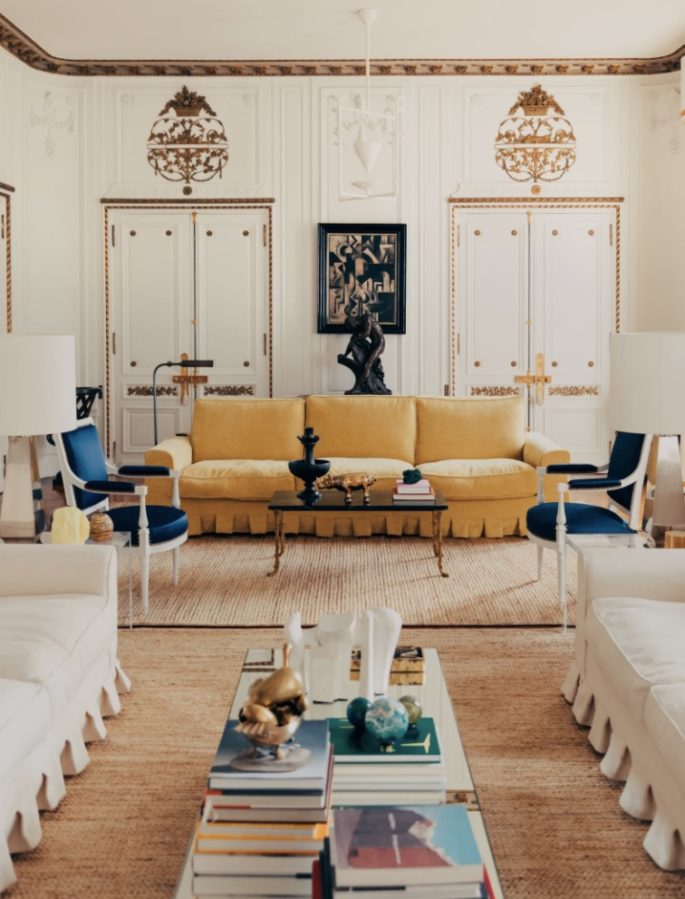
Designer Fabrizio Casiraghi breathes new life into a grand Paris flat via Architectural Digest
THE BRAIN ON BEAUTY
Beauty may have always been in the eye of the beholder, but the way we think about and define it has fundamentally transformed in recent years. Neuroaesthetics—the study of how the mind processes and responds to beauty and art—wasn’t introduced until 2002. “Beauty has [traditionally been held as] an individual assessment of a visual pattern,” says Denver-based architect Donald H. Ruggles, author of Beauty, Neuroscience & Architecture: Timeless Patterns and Their Impact on Our Well-Being.
What does that mean for interior design? If you recognize the geometry and colours of a pattern, then the ancient brain starts the emotion-to-feeling cycle that results in a sense of well-being. This applies to all visual arts, including interior design and architecture. Read more, ’10 Ways To Master The Perfect Room.’
If the pattern of a space is readily understandable, then the ancient brain signals that it is stress-free and approachable. The result is very similar to a meditation session.
Ruggles theorizes that we are always subconsciously searching for what’s called the nine-square pattern, which resembles a tic-tac-toe board. When we find this symmetry at what we’re looking at, from a building facade to a fireplace mantle, our brains experience a feeling of calm—and when we don’t find it, we feel stressed.
Jagged edges and sharp points, too, are design features that, if overused, can cause anxiety. Our ancient brain discerns these patterns as dangerous, including the release of adrenaline and cortisol—that diminish our health with long-term exposure. A typical living room, for instance, often includes a statement piece like a coffee table with jagged or sharp edges. A table with rounded edges, on the other hand, allows our nervous system to relax. Read more, ‘How to Create A Serene Room.’
While some designers believe symmetry in design facilitates well-being, other experts think it’s overrated. Symmetry is not an indication of equilibrium or balance, nor does it translate to wellness,” says New York-based architect and designer Anjie Cho, a feng shui specialist and author of Holistic Spaces: 108 Ways to Create a Mindful and Peaceful Home. “In fact, symmetry can be pretty boring, because it focuses on duality and can be two-dimensional, which is not interesting to the eye.” A 2014 study by researchers at the University of Liverpool found that although people almost universally prefer symmetry over random patterns, there is little evidence that it causes a positive emotional response. So perhaps there’s truth in both arguments: Symmetry in design (like the nine-square pattern) can be calming in its familiarity, but asymmetrical accents can also surprise and delight.
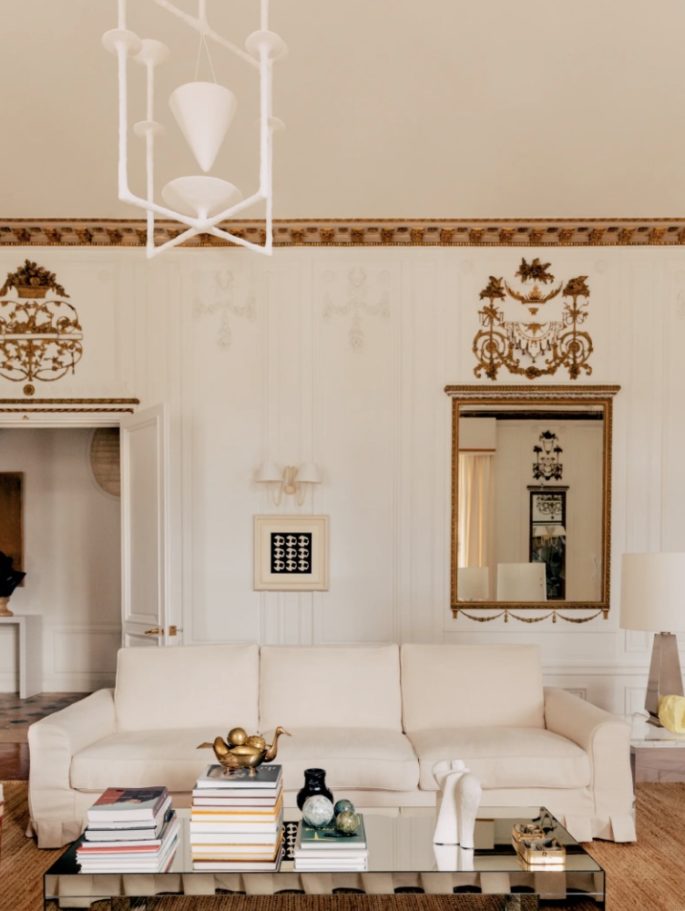
Designer Fabrizio Casiraghi breathes new life into a grand Paris flat via Architectural Digest
The 5 Things You Need For A Happy Home:
PERSONAL SPACE
In the age of Instagram, it can be easy to forget how important it is to customise a home based on the inhabitants’ idiosyncrasies, not just the trends that excite them. After weeks and months working on a project, designers get to know their clients intimately. But unless a self-aware client speaks up, how often does their personality type, and not just their taste, factor seriously into the design vision? Creating spaces to suit different temperaments and lifestyles can be a challenge—especially among couples or families whose shared spaces must work for everyone. Read more, ‘Designing A Feelgood Home.’
Introversion and extroversion, in particular, are personality traits that tend to impact—and be heavily influenced by—design choices. Baton Rouge, Louisiana–based designer Rachel Cannon has made a career out of creating spaces that suit both types. (Her catchy website tagline: “We help introverts and extroverts peacefully coexist at home.”) How does she do it? “Most couples will have to compromise when it comes to taste, but few ever consider how they actually need their homes to help them recover from their day,” says Cannon, who identifies as an introvert. An open floor plan caters more to an extroverted person’s penchant for stimulation, as the reward centre in his or her brain is wired to perceive things like sound, light, socialising and attention as a reward. However, an introvert’s reward centre is wired to release dopamine during low-key activities like reading, quiet conversation, and calm settings. Ideally, a home would help nurture both types of responses, offering areas of stimulation for the extrovert and areas of quiet for the introvert.
The way homes are built today are geared more toward extroverts.
We design rooms for every activity other than quiet time. To address that gaping hole, it’s important to be deliberate about design details, and choose fabrics that can facilitate a more peaceful space for those who need to chill to recharge. Choose soft textures to dampen sound, especially in an open floor plan. Go for curtains, rugs, cosy upholstery, even wallcoverings that can go a long way in muffling the echoing in an open plan. Rather than just painting a room, consider upholstering the walls. Even [affordable] wool flannel offers amazing depth and texture—and selecting a fabric rather than a paint means the light will be absorbed, rather than reflected into the room, ultimately creating a hushed atmosphere. Read more, ‘Why You Should Redecorate Until You Kick The Bucket.’
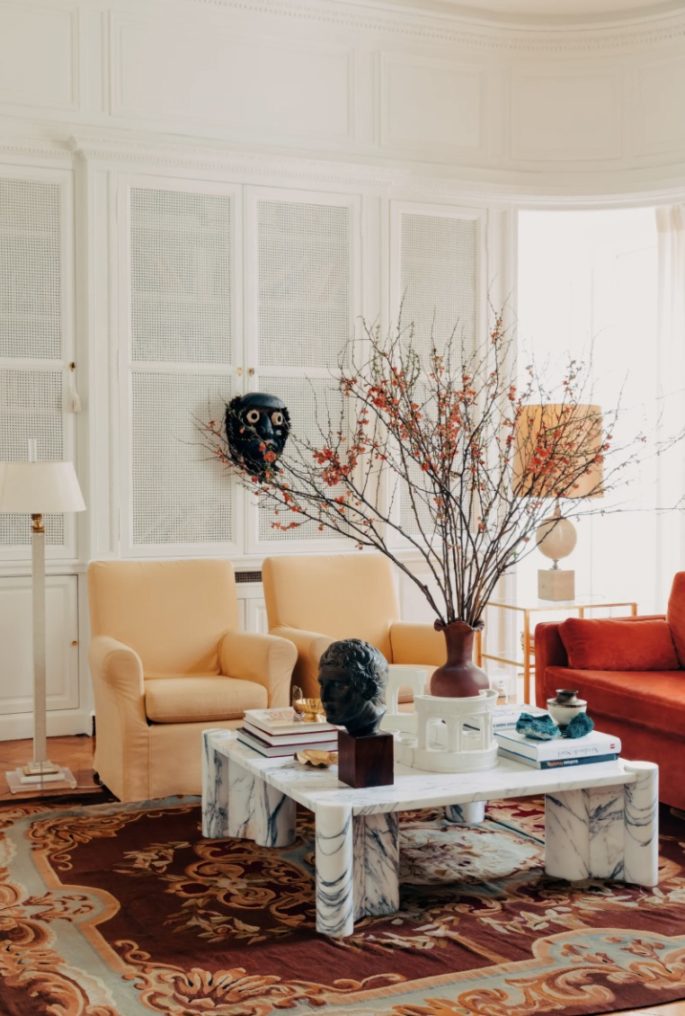
Designer Fabrizio Casiraghi breathes new life into a grand Paris flat via Architectural Digest
Whether introvert or extrovert, everyone seeks refuge from rough days at home.
In order to create a sanctuary for all personality types, you can assess individual design elements—such as lighting, colour, texture, sound, plumbing, furniture, cabinetry, entrances and layout—to ensure that an interior will fit the dwellers’ unique needs. Every aspect of your atmosphere can be redefined in a way that can create a life of joy. During the design process, be conscious or how excited you feel looking at certain items. When you feel enthusiasm towards things, you know you’ve struck the right note for you.
Tweaking minor design details that cause anxiety can add up to a space that facilitates much better mental health. Homes with multiple flooring surfaces can cause a feeling of inhibition and discomfort; swapping those for a smooth, uniform surface encourages freedom of movement and a sense of calm. Walls that are the same colour as floors, force us to constantly adjust our depth perception; delineating the two with different hues makes the space feel more clearly defined, and thus safer. Breaking up a square room with a curved wall or furniture piece, or even removing unnecessary walls, can eliminate feelings of claustrophobia, and with it, blocked thoughts and energy.
Easing anxiety through design can, at times, require outside-the-box solutions.
For a married couple adjusting to life after one spouse’s stroke, you can create a few innovative fixes. The husband couldn’t sleep because he was afraid his wife would get up to go to the bathroom in the middle of the night, fall and get hurt. So the designer installed motion-sensor airplane runway lights that lit up a direct path, allowing her to get to the bathroom without her husband’s help or concern. We also made the walls darker and kept the carpeting light for added depth perception. Both spouses were able to let go of their fears with their new, adjusted environment. It’s a great example of how a few small but significant design changes can have a powerful emotional impact.
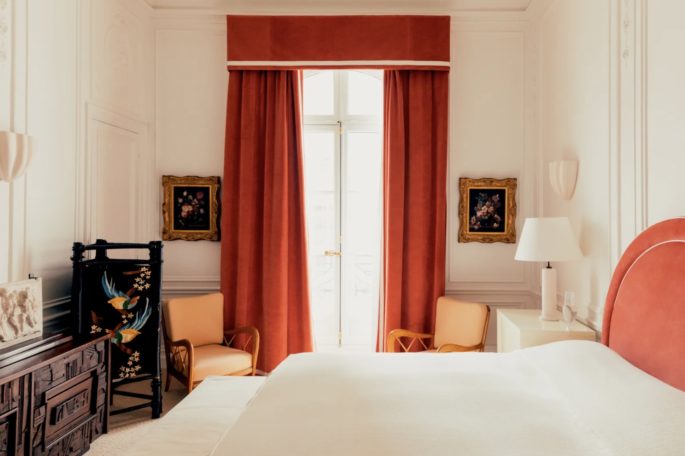
Designer Fabrizio Casiraghi breathes new life into a grand Paris flat via Architectural Digest
ARTISTIC MERIT
A home with thoughtfully curated art isn’t just prettier—it’s also better for you. Research by a neurobiologist at University College London in 2011 found that people viewing art experience a surge of the feel-good chemical dopamine, as well as activation in the same part of the brain associated with falling in love. And a 2014 meta-analysis published in Brain and Cognition found that viewing paintings may support brain functions related to memory, decision-making and emotional processing.
Most simply, art brings us pleasure and joy, which can have a positive effect on our mental state,” says Sarah Barnard, a Los Angeles–based interior designer who specializes in spaces that promote wellness through art, nature and sustainability. “Installing art is a simple way to elevate well-being and connect you to your home. Art can magnify happiness and encourage new and different experiences. Its presence may have a similar effect to incorporating positive habits into your routine, like meditation or walking outside. The absence of these habits isn’t necessarily damaging—but the addition can hugely improve mood.”
When helping clients select art, Barnard suggests that instead of viewing the process from a purely financial perspective, they trust their instincts to find what clicks for them on an emotional level. “We try to help our clients find a balance between sound investments and works that bring them a critical feeling of personal joy. It’s essential for art to resonate personally with people living in the home.”
Art featuring vibrant colours can be energising in common spaces like living or dining areas, while neutral hues, dreamy abstracts and diffused sculptural lighting can help make the bedroom a restorative space. Art in the office should feel personal and offer a mental escape to rejuvenate and boost productivity. For extroverts, large, bold statement pieces featuring interesting backstories or materials—all springboards for a lively conversation about the piece—can be ideal for entertaining; for introverts, art with soothing colors, natural themes, textiles or sculptural works with a nestlike quality can promote comfort, calm and decompression.
What if one person in a house has a penchant for pop art and the other gravitates toward abstract expressionism? Being mindful of personal preferences in individual spaces guarantees everyone is getting something they love.
In common areas, art should speak to shared tastes. When selecting artwork for a group, it’s key to ensure that everyone has a voice.
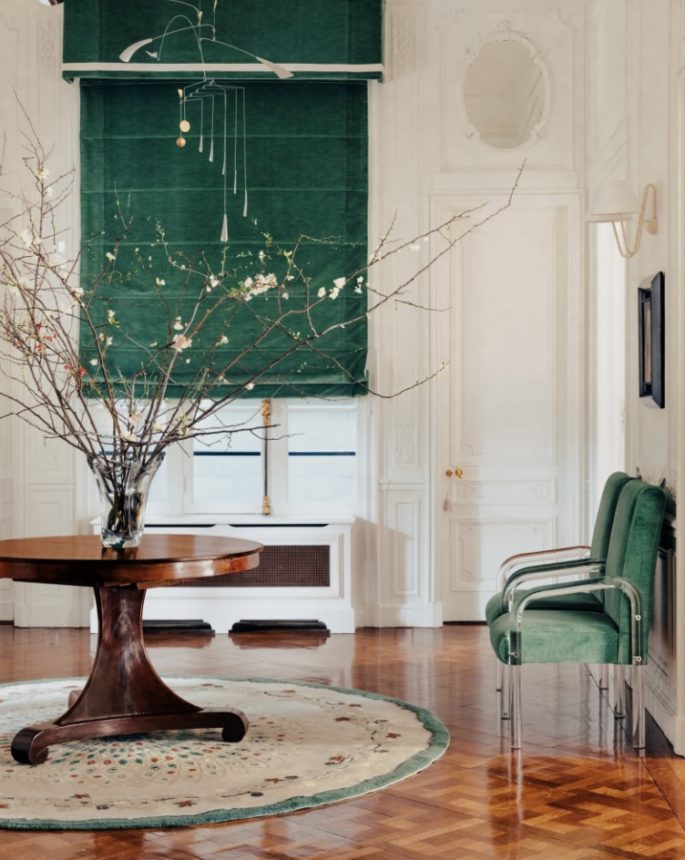
Designer Fabrizio Casiraghi breathes new life into a grand Paris flat via Architectural Digest
NATURALLY INCLINED
When it comes to design elements proven to promote mental health, the research is clear on the benefits of greenery and the great outdoors. Spending time in natural environments can lift mood, improve focus and fight stress. And you don’t have to go for a hike—the idea also extends to bringing the outdoors in. A 2014 study published in the Journal of Experimental Psychology found that people who worked in offices with plants felt better, were more productive, and research repeatedly finds that simply looking at images of nature scenes improved memory. These findings bolster the philosophy behind biophilic design which aims to strengthen human connection to nature through design and architecture—something a growing number of designers are interested in. Spaces that harmonise with the environment create better energy and make us happier. For instance if you want to focus on the exterior garden in a townhouse, you can open up the rear with a floor-to-ceiling glass façade, so it feels like the space does not end, but connects to nature outside.
Perhaps the best part about nature-inspired design is its accessibility.
Even if you’re not building or renovating a home, it’s easy to bring natural elements inside for the same mental health benefits, even if it’s just a low-maintenance potted fern. Something as simple as bringing in fresh flowers or a beautiful plant can enhance the quality of a space. Natural materials such as wood offer a calmer environment while absorbing noise. Softly curved and continuous surfaces, inspired by natural forms, can also instill a sense of peace.
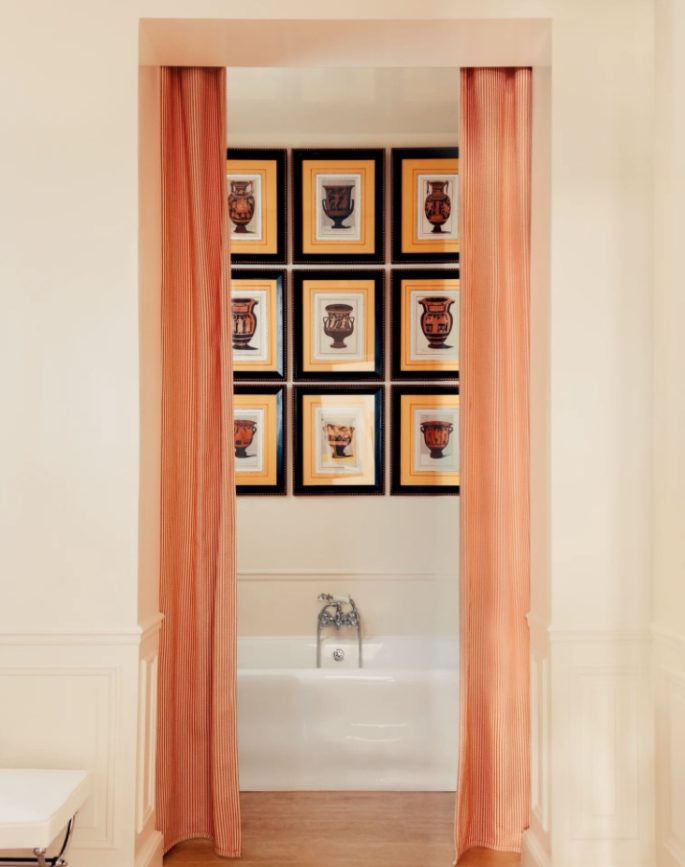
Designer Fabrizio Casiraghi breathes new life into a grand Paris flat via Architectural Digest
LIGHT LESSONS
As with the abundance of research pointing to the benefits of nature, copious studies have revealed light’s impact on our health, from mood and energy to productivity and decision-making. Even something as simple as the amount of light you’re exposed to can make a difference: A 2014 study from the University of Toronto Scarborough, for example, showed that bright light can cause people to feel emotions (both positive and negative) more intensely. On the other hand, insufficient light in the home is associated with depression, per numerous studies. Beyond the volume and brightness of light in the home, designers should also consider the colour. Read more, ‘Let There Be Light, But Let’s Make Sure It’s Good Light.’
Light that emits blue wavelengths (such as energy-efficient LED bulbs and the glow emitted from electronic screens) can be good during the day because it may fight fatigue. It may also improve memory, as well as creative thinking. However, blue light can mess with circadian rhythms by suppressing melatonin, which can cause sleep disruption; longer-wavelength red light may have the opposite effect, helping you fall asleep more easily—and we all know how getting enough sleep (or not) affects mood.
Many designers are already paying plenty of attention to light. Along with colours, layout and fabrics, light can affect [how we feel]. Small changes to these elements can significantly improve comfort levels. Natural light, in particular, is very important, and greatly affects the quality of any space.
A space that’s infiltrated with natural light will feel amazingly calm – and every person who visits has the same reaction of serenity.
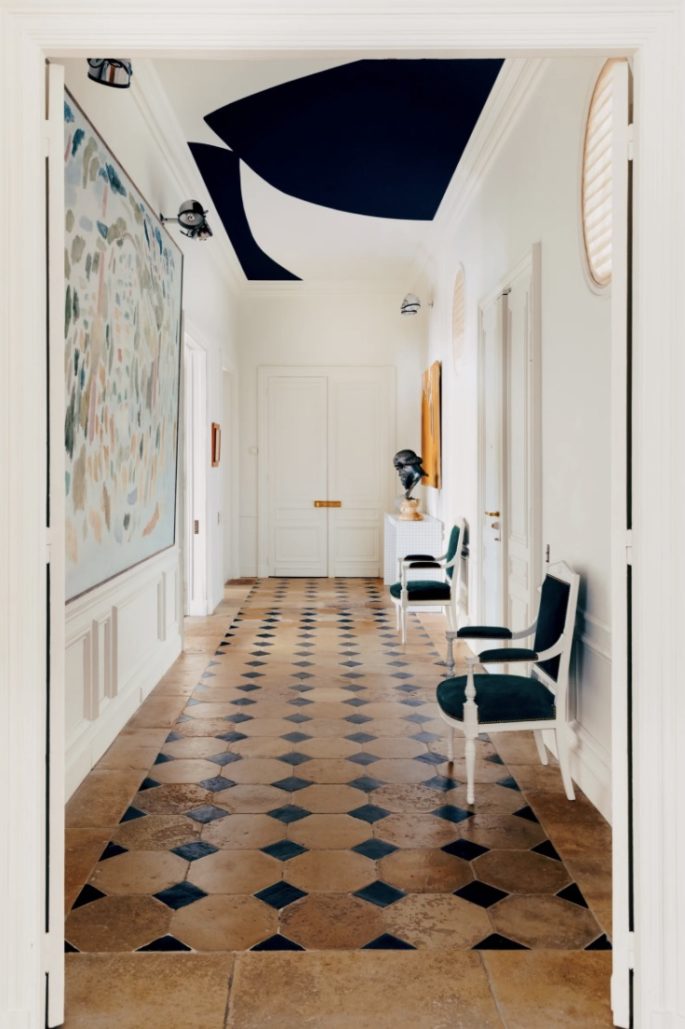
Designer Fabrizio Casiraghi breathes new life into a grand Paris flat via Architectural Digest
COLOUR CODING
No matter how you feel about Living Coral and Classic Blue (Pantone’s Colour of the Year choices for 2019 and 2020, respectively), it’s worth remembering that colour isn’t just about trends or taste—it can have a real psychological impact. Colour is one of the most effective ways to shift the energy of a space. Research suggests that the impact colours have on our state of mind is different than the way the body reacts to the light from, say, a computer or phone screen. Different wavelengths of colours affect us differently. Shorter wavelengths, like blue, are more soothing than colours like red or yellow, which are more energizing.
A 2016 meta-analysis of 40 studies published in Environment-Behaviour Proceedings Journal found that colour in the workspace can have a significant effect on temperament and performance, with a positive association between green and feelings of freshness and calm. A 2013 study published in the International Journal of Accounting Research reported that green’s fellow cool hue, blue, has been associated with well-being and focus; however, other research shows it may make some people feel drowsy or downbeat. It’s likely no surprise that red, is associated with higher levels of excitement, stimulation, and competitiveness, with aggression and low attention span being potential downsides.
Yellow, too, is considered energizing and cheerful—though, along with purple, it was also found to have a somewhat distracting effect.
Colour can also have a symbiotic relationship with mood: In a 2019 study, participants who were happy and relaxed were more likely to gravitate toward light colours, including yellow or yellow-green. Regardless of what the research says, the effect of any hue in the home is also determined by an individual’s own disposition. Everyone’s a little different Something that’s comforting or soothing to one person may not be for someone else—not because the qualities of the colours change, but because needs vary from person to person. One person might need more uplifting energy; someone else might need a more relaxing or soothing energy to feel balanced.
As with plants, colour doesn’t require major updates to a space. Start with wall paint, and if that’s too much of a commitment, try bringing in new hues through accessories. It’s a fun and simple way to work with energy in the home. Bedding, pillows and artwork are a great option, because you can change them out quickly, test different things and see what works.
The change may feel subtle, but the impact can be profound. If you’re having trouble getting out of bed in the morning, maybe the colour scheme is too soothing, and needs a fiery throw to give the space—and you—a boost. Does your attention keep wandering in the home office? Try swapping that abstract wall print for a forest or ocean scene. Just like any wellness routine, designing for mental health will never be a one-size-fits-all formula, but it can be an empowering tool if you use it right. **This article originally appeared in Spring 2020 issue of Business of Home, Issue 15.
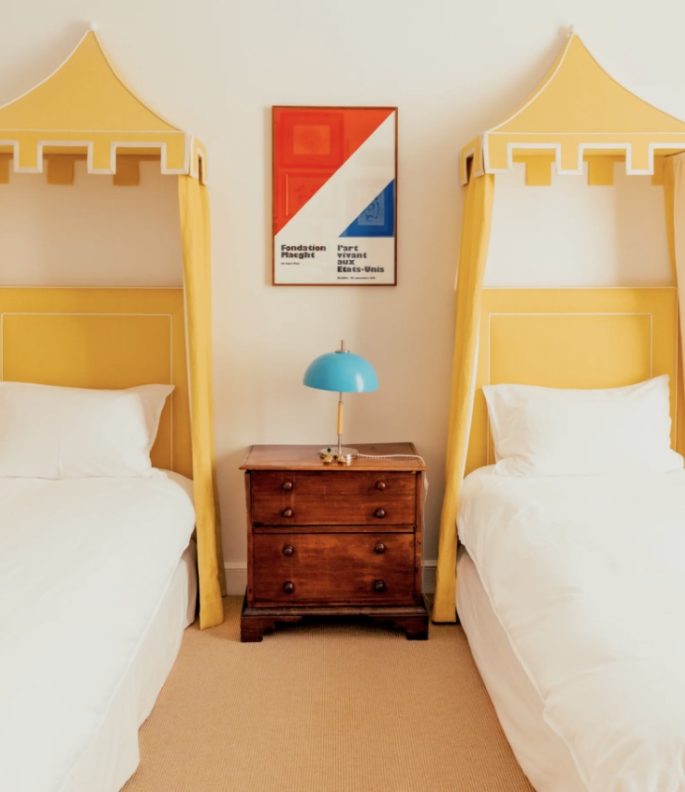
Designer Fabrizio Casiraghi breathes new life into a grand Paris flat via Architectural Digest.
CLEAR: WHAT TO GET RID OF
Toxic cleaning products and bleach. Ditch noxious chemicals and anything that warrants a toxic warning flag for natural alternatives. High-VOC (volatile organic compounds paint (paint ‘off-gasses’ over time, not just during application and drying time. Mould. Get rid of it as a matter or urgency – it gives off airborne spores that you definitely do not want to inhale. Plastic. Choose natural materials over manmade wherever possible, especially with respect to food storage.
CLEANSE: WHAT TO CLEAN UP
Clean cooking. Clean water. Clean products, avoid nasties such as sodium lauryl sulfate and parabens. Clean materials, be mindful of the content of varnishes, sealants or upholstery that may have been used on furniture, especially vintage pieces.
COMBAT: WHAT TO INTRODUCE
House plants. Research by NASA has revealed that they can remove up to 87% of air toxins within 24 hours. Natural beeswax candles. Burning these is reputed to release negatively charged ions into the air, which may keep common allergens such as dust at bay. Himalayan salt lamps. Essential oils. Used for millenia to purify and heal.
CONTINUE: HOW TO KEEP THINGS MOVING
Clear rubbish or clutter from around your front door. Small square tables are banned. Clean your windowns. Keep pet beds and bowls as clean as your own.
****Part of this article originally appeared in Spring 2020 issue of Business of Home, Issue 15.

